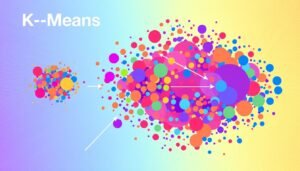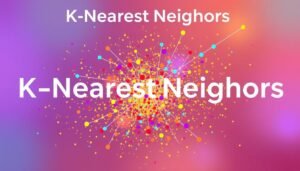Since its introduction in 2008, Microsoft Azure has grown into one of the most powerful platforms for data science. Originally launched as Windows Azure, it has evolved to meet the demands of modern data-driven applications. Today, it offers a robust ecosystem for cloud computing and machine learning.
Azure integrates seamlessly with data science workflows, providing tools for analytics, AI, and big data processing. Its global infrastructure ensures reliability and scalability, making it a top choice for professionals worldwide. Whether you’re building predictive models or managing large datasets, Azure delivers the resources you need.
In this article, you’ll learn how to leverage Azure’s capabilities for your data science projects. From its expansive suite of services to its cutting-edge machine learning tools, we’ll explore everything you need to know to get started.
Key Takeaways
- Microsoft Azure has evolved significantly since its launch in 2008.
- It integrates cloud computing with advanced data science solutions.
- Azure’s global infrastructure ensures scalability and reliability.
- It supports machine learning, analytics, and big data processing.
- This article will guide you through Azure’s ecosystem for data science.
Introduction to Azure for Data Science
Microsoft Azure has become a cornerstone for modern data science projects. Its evolution from a basic cloud service to a comprehensive service platform has transformed how professionals approach data-driven challenges. Today, it stands as a reliable solution for developers and data scientists alike.
Azure’s global infrastructure ensures scalability and flexibility, making it ideal for handling large datasets and complex workflows. Whether you’re building predictive models or deploying machine learning applications, Azure provides the tools you need to succeed.
One of Azure’s key strengths is its support for multiple programming languages and tools. From Python and R to TensorFlow and PyTorch, it caters to the diverse needs of data science professionals. This versatility makes it a favorite among developers working on innovative projects.
Here are some benefits of using Azure for data science:
- Scalability: Handle projects of any size with ease.
- Flexibility: Use your preferred programming languages and frameworks.
- Integration: Seamlessly connect with other cloud services and tools.
- Security: Protect your data with advanced security features.
As we dive deeper into Azure’s functionalities, you’ll discover how its ecosystem can elevate your data science projects. From machine learning to real-time analytics, Azure offers a wealth of opportunities to explore.
Understanding the Cloud Solution Landscape
The cloud computing landscape has evolved rapidly, offering diverse solutions for modern data needs. From infrastructure to software, cloud platforms provide tools that cater to businesses of all sizes. Understanding this landscape is key to leveraging its full potential.
Cloud services are typically categorized into three models: Infrastructure as a Service (IaaS), Platform as a Service (PaaS), and Software as a Service (SaaS). IaaS provides virtualized computing resources, PaaS offers development platforms, and SaaS delivers ready-to-use applications. These models work together to create a seamless cloud ecosystem.
One of the standout features of modern cloud platforms is their support for container technology. Containers allow developers to package applications with all their dependencies, ensuring consistency across environments. This makes them ideal for modern data applications that require flexibility and scalability.
Relational databases are another critical component of the cloud landscape. They provide structured storage for data, enabling efficient querying and analysis. Hosted database services offer enhanced scalability and security, making them a reliable choice for businesses.
By understanding these components, you can better navigate the cloud solution landscape and choose the right tools for your data projects. Whether you’re deploying containers or managing databases, the cloud offers endless possibilities.
Exploring Microsoft Azure Services
Cloud platforms have transformed how businesses handle data and applications. Microsoft’s ecosystem offers a wide range of services designed to meet diverse needs. From storage to IoT, these tools empower developers and enterprises alike.
Overview of Core Services
Microsoft’s platform provides a robust suite of services for data science and beyond. Key offerings include storage solutions, computing power, and advanced analytics tools. These services are built to scale, ensuring they can handle projects of any size.
One standout feature is its support for container technology. Containers allow developers to package applications with all dependencies, ensuring consistency across environments. This makes them ideal for modern data applications.
SaaS, PaaS, and IaaS Explained
Understanding the differences between SaaS, PaaS, and IaaS is crucial for choosing the right tools. Here’s a breakdown:
| Service Model | Description | Example |
|---|---|---|
| SaaS | Ready-to-use applications delivered over the internet. | Microsoft 365 |
| PaaS | Development platforms for building and deploying applications. | Azure App Service |
| IaaS | Virtualized computing resources like servers and storage. | Azure Virtual Machines |
Each model serves different needs, offering flexibility for various workloads. For instance, SaaS is ideal for businesses needing quick solutions, while IaaS provides control over infrastructure.
Microsoft’s contributions to IoT are also noteworthy. Its IoT Hub connects devices for seamless data collection, enabling real-time insights. This is particularly useful for industries like manufacturing and healthcare.
Whether you’re managing containers or deploying IoT solutions, Microsoft’s services offer scalability and versatility. These features make it a top choice for developers and enterprises alike.
Azure: The Cloud Powerhouse for Data Science
With over 600 services, it stands as a top choice for data-driven solutions. Its reputation for reliability and scalability makes it a trusted platform for complex data science projects. Whether you’re working on enterprise-level tasks or smaller-scale initiatives, it delivers the tools you need to succeed.
One of its standout features is its continuous evolution in data management. Over the years, it has introduced advanced tools to streamline workflows and enhance efficiency. This commitment to improvement ensures that users always have access to cutting-edge solutions.
Another key strength is its integration of DevOps practices. By combining development and operations, it enables seamless collaboration and faster deployment of data projects. This approach is particularly valuable for teams working on time-sensitive tasks.
Here’s why it’s a favorite among professionals:
- Scalability: Handle projects of any size with ease.
- Flexibility: Use your preferred tools and frameworks.
- Security: Protect your data with advanced features.
Effective management of cloud resources is crucial for optimizing data workflows. Its intuitive interface and robust monitoring tools make it easy to track performance and allocate resources efficiently. This ensures that your projects run smoothly and cost-effectively.
From azure iot solutions to advanced analytics, it offers a comprehensive ecosystem for data science. Its ability to adapt to diverse needs makes it a true cloud powerhouse, empowering professionals to achieve their goals with confidence.
Building a Data Science Workflow on Azure
Building a data science workflow requires careful planning and the right tools. A well-structured workflow ensures efficiency and accuracy from data ingestion to final analytics. Let’s explore how to create a seamless workflow using Microsoft’s platform.
Data Ingestion and Storage
The first step in any data science project is data ingestion. This involves collecting data from various sources, such as databases, APIs, or IoT devices. Microsoft’s platform offers robust tools to automate this process, ensuring data flows smoothly into your system.
Once ingested, data needs to be stored securely. The platform provides multiple storage options, including Blob Storage and Data Lake. These solutions are designed to handle large datasets efficiently, offering scalability and advanced security features.

Real-Time Analytics Tools
Real-time analytics is crucial for making timely decisions. The platform offers tools like Stream Analytics and Event Hubs to process and analyze data as it arrives. These tools enable you to gain insights instantly, helping you respond to changes quickly.
Here’s a comparison of key real-time analytics tools:
| Tool | Use Case | Key Feature |
|---|---|---|
| Stream Analytics | Real-time data processing | Scalable and low-latency |
| Event Hubs | Data ingestion from multiple sources | High throughput |
| Power BI | Real-time visualization | Interactive dashboards |
Another advantage is the platform’s support for both Windows and Linux environments. This flexibility allows teams to use their preferred operating systems, enhancing productivity and collaboration.
Automation plays a key role in streamlining workflows. Functions enable you to automate tasks like data ingestion and transformation. This reduces manual effort and minimizes errors, ensuring a smooth workflow.
By leveraging these tools, you can build a robust data science workflow that meets your project’s needs. From ingestion to analytics, the platform provides the resources to succeed.
Using Azure Machine Learning for Advanced Analytics
Advanced analytics is revolutionizing industries, and leveraging machine learning tools is key to staying ahead. Microsoft’s platform offers a robust ecosystem for building, training, and deploying AI models efficiently. Its secure infrastructure ensures your data remains protected throughout the process.
Training and Deploying ML Models
Training machine learning models requires precision and scalability. The platform provides tools like Automated ML and HyperDrive to streamline the process. These features allow data scientists to experiment with algorithms and hyperparameters, optimizing model performance.
Deploying models is equally seamless. With built-in support for containerization, you can package models and deploy them across environments. This ensures consistency and reliability, whether you’re working on a small project or an enterprise-level solution.
Integrating AI into Data Projects
Integrating AI into existing workflows can transform how you analyze data. The platform’s AI tools, such as Cognitive Services and Bot Framework, enable you to add intelligent features to your applications. For example, you can implement natural language processing or computer vision capabilities with minimal effort.
Here are some best practices for integrating AI:
- Start small: Focus on a single use case to test the waters.
- Leverage pre-built models: Save time by using existing AI solutions.
- Monitor performance: Continuously evaluate your AI tools to ensure they meet your needs.
Real-world examples highlight the platform’s impact. For instance, a healthcare provider used its machine learning tools to predict patient outcomes, improving treatment plans. Similarly, a retail company leveraged AI to personalize customer experiences, boosting sales.
By combining security, scalability, and advanced tools, the platform empowers data scientists to innovate. Whether you’re deploying models or integrating AI, it provides the resources to drive meaningful results.
Implementing Azure Functions and Serverless Computing
Serverless computing is transforming how developers approach data science tasks by eliminating the need for infrastructure management. This model, known as Function-as-a-Service (FaaS), allows you to focus solely on writing code while the platform handles the rest. It’s a game-changer for efficiency and cost-effectiveness.
With Azure Functions, developers can invoke code on-demand without worrying about servers or scaling. This flexibility makes it ideal for handling unpredictable workloads. Whether you’re processing data or running background tasks, serverless computing ensures your applications run smoothly.
One of the biggest advantages of serverless computing is its ability to scale dynamically. As your workload increases, the platform automatically allocates resources to meet demand. This ensures optimal performance without manual intervention.
Here’s why serverless computing is a great fit for data science:
- No infrastructure management: Focus on coding, not servers.
- Cost-effective: Pay only for the resources you use.
- Scalability: Handle workloads of any size with ease.
Azure Functions also supports multiple programming languages, including Python, JavaScript, and C#. This flexibility allows developers to use their preferred tools and frameworks. It’s a powerful tool for building diverse applications.
Real-world implementations highlight the efficiency of serverless architectures. For example, a retail company used Azure Functions to process customer data in real-time, improving decision-making. Another example is a healthcare provider that leveraged serverless computing to analyze patient records securely.
By combining scalability, flexibility, and cost-effectiveness, serverless computing empowers developers to innovate. Whether you’re building a small project or a large-scale application, Azure Functions provides the resources to succeed.
Azure Kubernetes Service and Container Solutions
Containerization has become a cornerstone of modern data science, enabling seamless application deployment and scalability. By packaging applications with their dependencies, containers ensure consistency across environments. This approach is particularly valuable for data-driven workflows, where flexibility and efficiency are crucial.
Deploying Containerized Applications
Azure Kubernetes Service (AKS) simplifies the deployment of containerized applications. It automates tasks like scaling and load balancing, allowing developers to focus on building solutions. AKS supports multiple programming languages and frameworks, making it versatile for diverse projects.
One of its standout features is its integration with Azure functions, enabling serverless computing for containerized apps. This combination enhances efficiency and reduces operational overhead. Whether you’re deploying a small app or a large-scale solution, AKS provides the tools to succeed.
Managing Cluster Scalability
Scalability is a key advantage of using AKS. It dynamically adjusts resources based on workload demands, ensuring optimal performance. This is especially useful for data science projects, where workloads can vary significantly.
To ensure high availability, AKS offers features like auto-scaling and fault tolerance. These capabilities minimize downtime and enhance reliability. By leveraging edge computing, AKS also supports low-latency applications, making it ideal for real-time analytics.
Here are some best practices for managing cluster scalability:
- Monitor performance: Use built-in tools to track resource usage and adjust as needed.
- Optimize resource allocation: Allocate resources efficiently to avoid bottlenecks.
- Leverage edge computing: Reduce latency by processing data closer to the source.
Real-world examples highlight the benefits of container solutions. For instance, a retail company used AKS to scale its e-commerce platform during peak seasons, ensuring smooth customer experiences. Similarly, a healthcare provider deployed containerized apps for real-time patient monitoring, improving care delivery.
By combining Azure functions, scalable deployment, and edge computing, AKS empowers data scientists to innovate. Whether you’re managing clusters or deploying apps, it provides the resources to achieve your goals.
Leveraging Azure IoT for Data Collection
The Internet of Things (IoT) is reshaping how data is collected and analyzed in real-time. By connecting devices seamlessly, businesses can gather insights faster and more efficiently. Microsoft’s IoT solutions, like IoT Hub and IoT Central, provide the tools needed to build robust data collection systems.
Connecting IoT Devices
Connecting IoT devices is a critical step in building a data-driven ecosystem. IoT Hub acts as a central hub, enabling secure communication between devices and the cloud. It supports a wide range of protocols, ensuring compatibility with diverse hardware.
Integration with azure virtual environments enhances performance by providing scalable resources. This setup ensures that data flows smoothly, even during peak usage. Whether you’re managing sensors or industrial equipment, IoT Hub simplifies connectivity.
Real-Time Data Collection Strategies
Real-time data collection is essential for making timely decisions. IoT Central offers a user-friendly interface for monitoring and managing devices. It also provides built-in analytics tools, allowing you to process data as it arrives.
Here’s a comparison of key features for real-time data collection:
| Tool | Use Case | Key Feature |
|---|---|---|
| IoT Hub | Device connectivity | Secure communication |
| IoT Central | Device management | Built-in analytics |
| Stream Analytics | Real-time processing | Low-latency |
Using azure stack further enhances these capabilities by providing a consistent platform for hybrid environments. This ensures that your IoT applications run smoothly across different infrastructures.
Case studies highlight the effectiveness of these strategies. For example, a manufacturing company used IoT Hub to monitor equipment in real-time, reducing downtime by 30%. Another example is a logistics firm that leveraged IoT Central to track shipments, improving delivery accuracy.
By combining app connectivity, scalable resources, and advanced analytics, Microsoft’s IoT solutions empower businesses to innovate. Whether you’re connecting devices or analyzing data in real-time, these tools provide the foundation for success.
Securing Your Data on Microsoft Azure
Securing data in the cloud is a top priority for businesses leveraging modern technology. With the increasing complexity of data workflows, robust security measures are essential. Microsoft’s platform offers a comprehensive suite of tools to protect your data and ensure compliance with industry standards.

Identity and Access Management Strategies
Identity and access management (IAM) is the foundation of cloud security. Microsoft’s Entra ID provides a centralized solution for managing user identities and permissions. It supports multi-factor authentication (MFA), adding an extra layer of protection against unauthorized access.
By centralizing IAM efforts, businesses can streamline risk management across their cloud deployments. This approach ensures that only authorized users can access sensitive data, reducing the risk of breaches.
Integrating Security into Kubernetes and DevOps
Security is seamlessly integrated into azure kubernetes service and azure devops practices. Kubernetes clusters are protected with advanced encryption and access controls. DevOps pipelines incorporate security checks at every stage, ensuring that vulnerabilities are identified and addressed early.
Here are some best practices for securing your data:
- Enable MFA: Add an extra layer of security for user accounts.
- Monitor access logs: Track user activity to detect suspicious behavior.
- Encrypt data: Use encryption for data at rest and in transit.
By following these strategies, you can enhance the security of your cloud deployments. Whether you’re managing identities or integrating security into DevOps, Microsoft’s platform provides the tools to keep your data safe.
Integrating Azure SQL and Data Storage Solutions
Efficient data management is critical for modern businesses, and integrating robust database solutions is key to achieving this. Azure SQL Database offers a powerful platform for managing structured data, ensuring high performance and reliability. By combining it with other storage solutions, businesses can create a seamless data ecosystem.
Optimizing Database Performance
Optimizing database performance is essential for handling large datasets and complex queries. Azure SQL Database provides advanced tools like query performance insights and automatic tuning. These features help identify bottlenecks and improve query speed, ensuring smooth operations.
Another key feature is its integration with serverless computing. This allows databases to scale dynamically based on workload demands, reducing costs and improving efficiency. Whether you’re running analytics or managing transactions, Azure SQL ensures optimal performance.
Scalability and Reliability Features
Scalability is a cornerstone of Azure SQL Database. It supports both vertical and horizontal scaling, allowing businesses to handle increasing data volumes without compromising performance. This flexibility is crucial for growing enterprises.
Reliability is equally important. Azure SQL offers features like geo-redundancy and automatic backups. These ensure data is protected against failures and disasters, providing peace of mind for businesses.
Here’s how businesses can leverage these features:
- Scale effortlessly: Handle peak workloads without manual intervention.
- Ensure data safety: Protect critical information with built-in redundancy.
- Optimize costs: Pay only for the resources you use with serverless options.
By integrating Azure SQL with other storage solutions, businesses can build a robust data infrastructure. Whether you’re optimizing performance or ensuring reliability, Azure SQL provides the tools to succeed.
Optimizing Analytics with Azure Synapse and Data Factory
In the realm of advanced analytics, combining powerful tools can transform how businesses interpret and utilize their data. Azure Synapse Analytics and Data Factory are two such tools that streamline data integration and enhance warehousing capabilities. Together, they create a robust framework for managing and analyzing large datasets efficiently.
Streamlining Data Integration
Data integration is a critical step in any analytics workflow. Azure Data Factory simplifies this process by providing a virtual environment to connect, transform, and move data across various sources. Whether you’re pulling data from on-premises systems or cloud-based applications, Data Factory ensures seamless integration.
One of its standout features is its ability to automate workflows. By scheduling data pipelines, businesses can reduce manual effort and minimize errors. This is particularly useful for organizations handling large volumes of data from multiple applications.
Here’s how Data Factory enhances data integration:
- Automation: Schedule and manage data pipelines effortlessly.
- Scalability: Handle increasing data volumes without compromising performance.
- Flexibility: Integrate with diverse data sources and formats.
Enhanced Data Warehousing
Azure Synapse Analytics takes data warehousing to the next level by consolidating big data for advanced analytics. Its virtual data environment allows businesses to store and process massive datasets efficiently. This ensures that insights are derived quickly, even from complex queries.
Synapse also integrates seamlessly with other tools, such as Power BI, for real-time visualization. This makes it easier for teams to interpret data and make informed decisions. By optimizing storage and processing, Synapse ensures that your data warehouse is both scalable and cost-effective.
Here’s a comparison of key features for data warehousing:
| Feature | Azure Synapse Analytics | Traditional Data Warehousing |
|---|---|---|
| Scalability | Handles petabytes of data | Limited by hardware |
| Integration | Seamless with BI tools | Requires additional setup |
| Cost Efficiency | Pay-as-you-go model | Fixed infrastructure costs |
By leveraging these tools, businesses can build a robust analytics framework that drives better decision-making. From integrating data to optimizing warehousing, Azure Synapse and Data Factory provide the resources to succeed.
Leveraging Edge Computing with Azure Virtual Desktop and Orbital
Edge computing is revolutionizing how data is processed by bringing computation closer to the source. This approach reduces latency, improves real-time decision-making, and is ideal for modern data projects. By leveraging Azure Virtual Desktop and Azure Orbital, businesses can unlock the full potential of edge computing.
Azure Virtual Desktop (AVD) enables remote access to applications and data, ensuring seamless collaboration across distributed teams. It supports edge scenarios by delivering high-performance computing resources directly to users, regardless of location. This flexibility is crucial for industries like healthcare and manufacturing, where real-time data processing is essential.
Azure Orbital elevates edge computing by processing satellite data in real time, making it particularly valuable for industries like agriculture and logistics. By integrating Azure IoT Hub, businesses can manage edge devices and data streams efficiently, ensuring smooth operations and timely insights.
How Edge Computing Enhances Data Projects:
Reduced Latency: Process data closer to the source for faster insights.
Scalability: Handle increasing data volumes without compromising performance.
Cost Efficiency: Minimize bandwidth usage by processing data locally.
Azure’s tools simplify managing edge computing solutions across distributed systems. With robust management capabilities, businesses can monitor and optimize deployments, ensuring efficient resource allocation and reducing operational overhead.
For example, a logistics company used Azure Orbital to track shipments in real time, improving delivery accuracy. Similarly, a healthcare provider leveraged Azure Virtual Desktop to process patient data securely at the edge, enhancing care delivery. These examples showcase the transformative power of edge computing.
By combining machine learning, IoT Hub, and advanced analytics, Azure empowers businesses to innovate. Whether deploying edge solutions or managing distributed systems, Azure provides the foundation for success.
Managing Deployments with Azure DevOps and Automation
Efficient deployment practices are essential for modern applications, and leveraging the right tools can make all the difference. Azure DevOps provides a comprehensive platform to streamline deployment processes, ensuring faster and more reliable builds. By integrating automation, businesses can minimize manual errors and enhance scalability.
Continuous Integration and Deployment
Continuous integration (CI) and continuous deployment (CD) are critical for modern development workflows. CI ensures that code changes are automatically tested and integrated into the main branch, reducing conflicts and improving code quality. CD takes this a step further by automating the deployment process, enabling faster releases.
Azure DevOps simplifies CI/CD with built-in pipelines. These pipelines automate tasks like testing, building, and deploying applications. For example, integrating app service with CI/CD pipelines ensures seamless updates to web applications. This approach reduces downtime and enhances user experience.
Here’s how CI/CD benefits your workflow:
- Faster Releases: Automate deployments to reduce time-to-market.
- Improved Quality: Test code changes continuously to catch errors early.
- Scalability: Handle increasing workloads without manual intervention.
Automated Infrastructure Management
Automation is key to managing infrastructure efficiently. Azure DevOps supports infrastructure as code (IaC), allowing you to define and manage resources programmatically. This approach ensures consistency across environments and reduces the risk of configuration errors.
For instance, integrating sql databases with automated workflows ensures that database updates are applied consistently. This is particularly useful for large-scale applications where manual management is impractical. Automation also enhances security by enforcing compliance policies across resources.
Here are some best practices for automated infrastructure management:
- Use IaC: Define infrastructure in code for consistency and scalability.
- Monitor Performance: Track resource usage to optimize costs.
- Enforce Security: Automate compliance checks to protect sensitive data.
By combining machine learning models with automated workflows, businesses can further enhance their data-driven applications. For example, deploying predictive models using CI/CD pipelines ensures that updates are rolled out seamlessly. This approach is detailed in our guide on machine learning models.
Azure DevOps empowers businesses to innovate by simplifying deployment and infrastructure management. Whether you’re updating an app service or managing sql databases, these tools provide the foundation for success.
Exploring the Developer Ecosystem and Multi-Platform Support on Azure
The developer ecosystem on Microsoft’s platform offers unmatched flexibility for modern applications. With tools designed to support diverse workflows, it empowers developers to build innovative solutions efficiently. Whether you’re working on Windows or Linux, the platform ensures seamless integration and compatibility.
Windows and Linux Integration
One of the standout features is its support for both Windows and Linux environments. This cross-platform compatibility allows developers to use their preferred operating systems without compromising performance. For instance, teams can collaborate on projects regardless of their OS, enhancing productivity and reducing friction.
Real-world examples highlight this flexibility. A global retail company used the platform to unify its development teams, enabling faster deployment of customer-facing applications. By leveraging both Windows and Linux, they achieved significant cost savings and improved efficiency.
Cross-Language and Tool Support
The platform’s cross-language support is another key advantage. Developers can use Python, Java, C#, and more, ensuring they work with their preferred tools. Comprehensive api access further enhances this flexibility, enabling seamless integration with third-party services and applications.
Here’s how this benefits developers:
- Flexibility: Use your preferred programming languages and frameworks.
- Efficiency: Streamline workflows with robust tools and integrations.
- Innovation: Build cutting-edge solutions with advanced features.
Ongoing development and support make this platform a preferred choice for modern developers. By continuously evolving its ecosystem, it ensures users have access to the latest tools and technologies. Whether you’re building analytics solutions or deploying applications, the platform provides the resources to succeed.
Conclusion
Data science thrives on innovation, and leveraging the right tools can make all the difference. Microsoft’s platform offers a comprehensive hub for data science, from advanced analytics to azure machine learning. Its scalable infrastructure and seamless integration with tools like Kubernetes and IoT solutions empower professionals to tackle complex challenges with ease.
Whether you’re building predictive models or managing real-time data streams, this platform provides the resources to succeed. Its robust security features and flexible deployment options ensure your projects are both efficient and secure. Real-world success stories highlight its transformative impact across industries.
Ready to elevate your data science projects? Explore the platform’s capabilities and discover how it can drive innovation in your next initiative. Start integrating these tools today and unlock new possibilities for your data-driven future.











